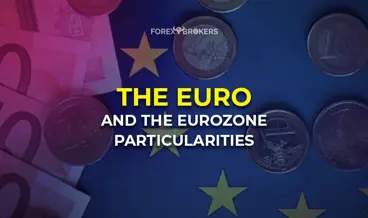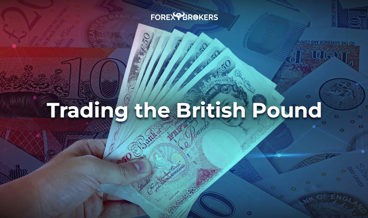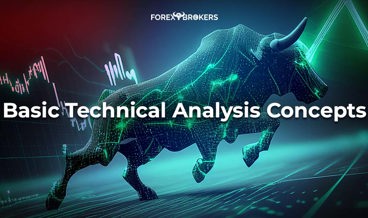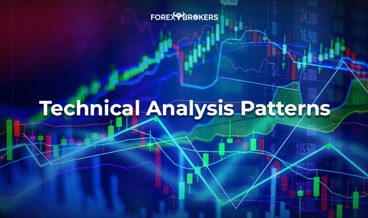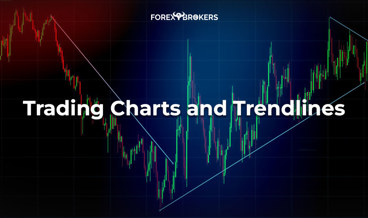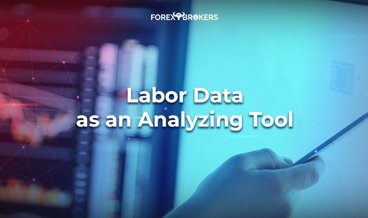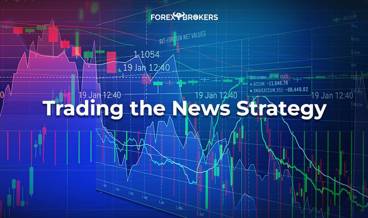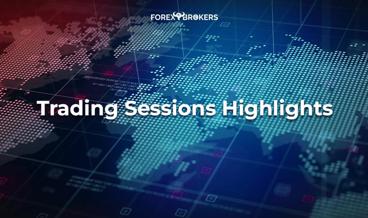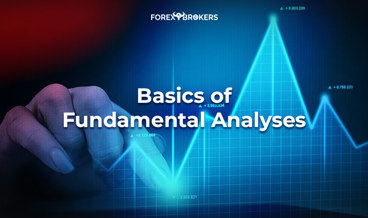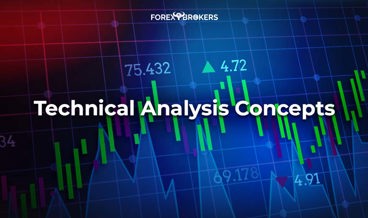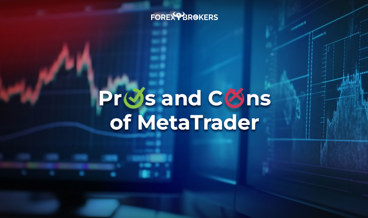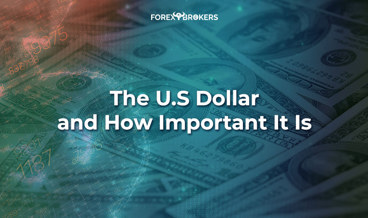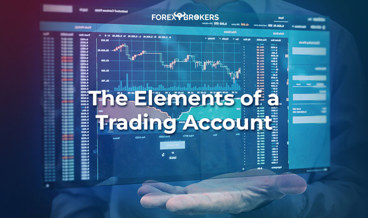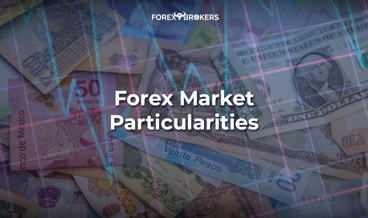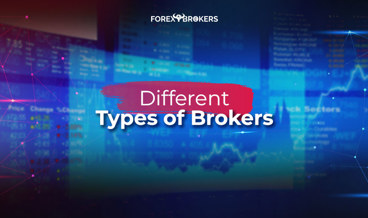The currency market operates 24/5, meaning that from Monday to Friday, there's always the possibility to speculate on currency pairs' moves. But differences exist between different periods throughout the trading week, with market conditions varying every few hours.
Economic news is responsible for most of the currency market's volatility. Any professional trader or retail trader active on the market for more than a few years can tell you that news trigger massive moves. However, not all economic news spur volatility, with some being more important than others.
The three big financial centers in the world (Tokyo, London, and New York) generate most of the demand in the currency market. In time, the hours surrounding financial operations in Tokyo, London, and New York became known as a trading session. Nowadays, the three trading sessions make up the trading day, each with its own particularities.
In this article, we'll look beyond the surface and dive into what each trading session means for the trading professional and the retail trader alike. Moreover, we'll look even at weekends and potential events that happen during the weekend and affect the upcoming trading session.
Furthermore, during the trading year, some trading sessions have distinct characteristics. For instance, Thanksgiving, Christmas, and other holidays have their way of influencing trading sessions during those periods.
Economic events have an influence over the price action too. For instance, the NFP week is exceptional in every way, and the trading sessions during the NFP week have distinct characteristics.
While it may seem as having little or no importance, understanding what each session brings is part of the analytical process before taking a trade, and this is the primary purpose of this article.
Asian Trading Session
Usually slow, the Asian trading session highlights the start of the trading week and day. Because trading follows the sun, with different markets opening as the sun comes up, when trading starts in Asia, the other financial centers of the world are closed.
However, it doesn't mean European and North American traders don't have an interest in the Asian price action. Literally, all institutional investors have an Asian branch ready to take over where the New York session left.

Asia is of particular importance to the world today. Some decades ago, every Western thesis concluded with the same idea: go to China. This meant the direction for decades, both for manufacturing and services, was to go to China for growth.
Asia did grow. It grew at such a fast pace that it exceeded every possible forecast. Moreover, the demographics in Asia outpace Europe or North America, making Asia the number 1 place to be for any industry concerned with future growth.
Obviously, brokerage houses noted that. Forex trading quickly became popular, with markets like the Japanese market generating huge volumes in commissions.
Despite the strong demand for online trading services, the market isn't active during Asian times. Remember that in one of the previous articles part of this academy, we mentioned the retail size of the currency market is only about five or 6 percent of the overall FX turnover.
It means that the strong retail trading interest in Asia is not enough to create volatility. Some economic events do have the potential to move prices, but they are isolated in the potential effects generated.
Tokyo, Sydney, Hong Kong, and Shanghai are important financial centers in Asia. Institutional investors have a representative office responsible for carrying out trading activities in the Asian session.
Watch Out for Possible Gaps
If there's a gap to form in the currency market, that's possible only in the Asian session. It affects Monday's price action, making the Asian session during that Monday a bit more volatile than usual.
Gaps appear because of events during the weekend. Elections, referendums, G7 meetings, or any news released over the weekend with an impact on financial markets can create a gap at the opening.
According to the Western approach to trading, all gaps close eventually. Furthermore, some theories suggest that gaps must close on the same trading day or, at the latest, the same trading week.
But the gap theories were born in other markets (i.e., the stock market) and not on the currency market. With its own particularities and massive liquidity, the currency market reacts differently, invalidating almost everything we know about gaps.
As such, it is no wonder that some gaps take years to fill. If you hunt a gap closing, you better have deep pockets as the FX market will test your financial liquidity at maximum.
In any case, gaps are responsible for a rise in volatility because traders apply gaps closing strategy during illiquid market conditions in the Asian session. What do illiquid market conditions mean?
First, it means spreads widen abnormally. In some cases, they exceed ten times or more the regular level during other trading sessions.
Second, trading big is a problem. Slippage affects most of the orders as the brokers simply don't have enough quotes from the liquidity providers to offer to traders. For these reasons, trying to do some damage repair right at the start of the Asian session when the market gap is difficult.
The Sunday Candlestick
Because the trading week starts with the Asian session with little or no market participants, gaps appear. First, trading begins in New Zealand. For a few hours, Monday trading in New Zealand overlaps with Sunday in the United States.
For this reason, on many trading platforms, a small Sunday candlestick appears. It reflects the price action during the New Zealand session. For a few hours, the market moved, and a candlestick appeared.
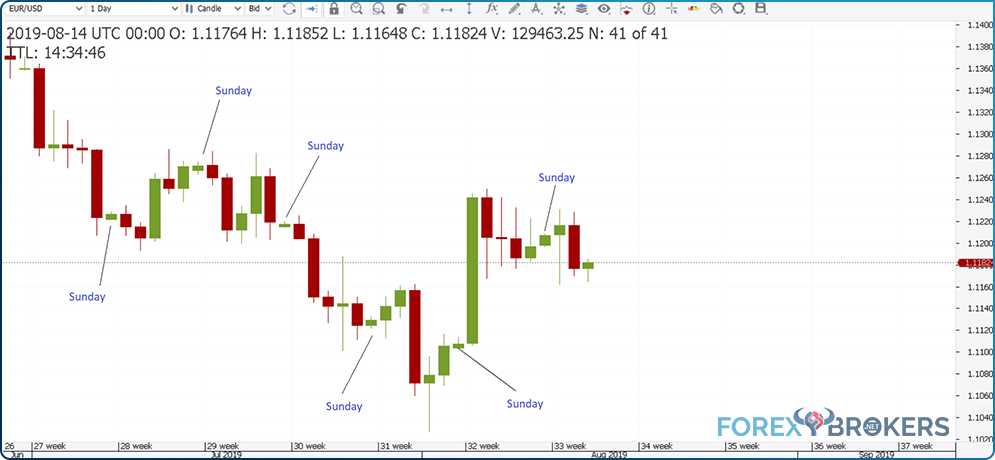
Now, this is a tricky subject for almost all traders and brokers alike. Apparently, this small candlestick appearing on all daily charts alters the price interpretation.
While the Sunday candlestick appears on the daily chart, the trading activity corresponding to it represents only a few hours of trading. All the other candlesticks show twenty-four hours of trading activity, and that distorts the price information.
Imagine you use a technical indicator to enter and exit the market. An oscillator like the RSI, for instance, considers fourteen periods on its default settings. It means two Sunday candlesticks appear in any RSI indicator. But the RSI formula considers highs and lows of every trading day, only that the Sunday candlestick doesn't show a trading day's activity.
For this reason, some brokers decided they don't show the Sunday candlestick anymore on their charts. But this leads to another issue, especially with the traders that use trading algorithms (Expert Advisors).
If you have an Expert Advisor built and tested on a broker that displays the Sunday candlestick, the results won't be the same if the Expert Advisor is moved to a broker that doesn't show the candlestick. Suddenly, a profitable trading strategy doesn't work anymore because of a small particularity to be found in the Asian trading session.
Economic Events to Consider
Not many events move the market during the Asian session, but some are of extreme importance. To start with, anything coming out of China in terms of economic growth or inflation generates volatility.
The problem with Chinese news is twofold. First, one cannot trust the info as the Chinese are well-known for manipulating the data to make it difficult for outsiders to understand the true nature of the Chinese economy. Second, important Chinese economic news comes out on Sundays when the currency market is closed.
On surprising releases, the Asian currencies react first. The Australian dollar, in particular, is highly sensitive to surprises from China because of the big share of Australian exports that go to China.
Besides news out of China, anything coming from the major central banks in the region has the power to move the markets. Three leading central banks are of particular importance for the currency trader:
- RBA – Reserve Bank of Australia
- RBNZ – Reserve Bank of New Zealand
- BOJ – Bank of Japan
Anything related to changes in the monetary policy out of Australia, New Zealand, or Japan, has an impact on the currency market. Typically, that impact becomes stronger by the time the London session starts.
The Bank of Japan is of particular importance during the Asian session. In charge of setting the monetary policy for one of the largest economies in the world, the Bank of Japan has run an experimental quantitative easing program for years, applying extreme measures never before used in conventional monetary policy. The JPY (Japanese yen) is the most influential currency in Asia, and its movement sparks volatility in all Asian markets.
Trading Strategies in the Asian Session
Because of the tight ranges and low volatility, technical trading using oscillators works very well in the Asian session. More precisely, traders use overbought and oversold levels on most oscillators to sell and buy for short-term profits.
Rarely do Asian traders have a longer time horizon for their open positions. The thing is that until the London session starts, no one takes a chance to keep positions open unless trading is done on more significant time frames like daily, weekly, or even monthly.
Trend trading strategies do work during the Asian session, but only on very low time frames like the one-minute or five-minute charts. Let's just say that the Asian session is not the time to make big market commitments, and traders wait for more clues on the next and more critical session, the London session.
For traders with a broader time horizon, one of the common ways to enter the market is by using pending orders. Therefore, the brokerage house will execute the orders only if the market reaches specific levels, making it a safer way to trade during the Asian session to avoid tight ranges. After all, if the broker executes the orders, the trader, anyways, wants to enter the market at that level, with the trading session having no importance.
London Session
The London session is, by far, the most relevant one for the currency market. The largest financial center in the world, London keeps its position despite the 2016 Brexit vote.
Following the United Kingdom's decision to leave the European Union, many banks and institutional investors moved their European branches from London to other cities on the old continent. Frankfurt, Paris, Amsterdam, and even Barcelona and Madrid were preferred by investors looking to avoid Brexit uncertainty. Nonetheless, the city of London remains the place to watch when trading financial markets, with currency trading occupying a central role.

By the time early London traders start their terminals, volatility begins to pick up. Many times during the early London session, the market reverses the price action seen in Asia. That's not difficult, considering the tight ranges there.
The most active trading session, London, has many controversial aspects. Not all trading sessions are the same. Perhaps this is one thing that attracts traders to the currency market, the uniqueness of every trading day.
To continue, even during the London session, some trading days have very tight ranges. The chances are that by the time London is gone for the day, ranging conditions remain in the upcoming New York and Asian sessions.
Of particular importance during the London session are the few hours when both London and New York traders are open. The two largest financial centers in the world, London and New York have an overlapping period when the trading activity increases significantly. Large trading volumes change hands in the most active trading session of each day.
What Moves Markets during the London Session
Europe is home to large economies. The eurozone economies increased their influence since the nineteen member countries joined the common currency, the euro.
The five hundred-plus million people that form the single market offer a great levy for the European Union when negotiating deals with other nations. The euro, therefore, is not surprisingly the second most traded currency after the USD, the world's reserve currency. Moreover, the euro is the second currency preferred by foreign nations when building foreign reserves, so European economic news moves the euro during the London session.
Besides the euro, the London session is home to other vital currencies part of the forex dashboard. The GBP (Great Britain pound), CHF (Swiss franc), the Nordic currencies, and even the RUB (Russian ruble) are very active during the London session.
Eurozone News
We'll have a dedicated article for most of the things that move the euro and other currencies during this trading academy. For now, to point out their importance, economic news out of the eurozone have their say in the way the euro moves.
PMIs (purchasing managers' index), unemployment rate, HICP (harmonized index of consumer prices), or retail sales are economic news on top of every trader's list. Moreover, anything coming out of the ECB (European Central Bank), like an interest rate decision, a speech, or a central banker's interview, creates movement on the euro pairs and, implicitly, on the overall forex dashboard.
United Kingdom News
The British pound is even more volatile than the euro. Thus, the GBP pairs have a larger ATR (average true range) than most euro pairs.
The same economic news makes the pound move, only that this time BOE (Bank of England) is responsible for intensifying the market's volatility. When BOE delivers its Inflation Letter, for instance, the GBP is all over the charts, trading chaotically and spreading volatility to other currency pairs too.
The BOE held a press conference after the meetings when it changed the interest rate on the British pound. The volatility surrounding the event influences all GBP currency pairs and sparks significant moves in other markets too.
Swiss News
Considered a safe-haven currency, the CHF is the refuge where many of the world's funds park their resources. Stability is, this time, the name of the game, and despite charging a negative interest rate for deposits in CHF, there's still a strong demand for the local currency.
Regular economic news doesn't influence the CHF flows like in the case of the EUR or GBP. Instead, the SNB (Swiss National Bank) is a special central bank. We won't cover it here in great detail, but to spark the curiosity to read the future article dedicated to the CHF and the SNB, just think of the fact that the SNB is a privately-owned bank. Yes, a privately-owned central bank, if you can imagine such a thing.
The SNB is one of the most interesting central banks in the world, continually intervening in the currency market. Either to stabilize the CHF's value or to simply implement its monetary policies, the SNB generates volatility during the London session and makes the CHF pairs interesting to trade.
The London Fix
As already mentioned in a previous article, it is worth repeating as a critical event during the London session. The London fix takes place when New York and the London sessions overlap. With both financial centers active and traders from both sides of the Atlantic Ocean watching the developments, the fix happens at 4 p.m. London time when prices of currencies for commercial transactions are fixed.
Trading During the London Session
Normal spreads and trading conditions are common during the London session. We can mention that out of the three trading sessions. The London one is where no surprises in terms of execution or slippage exist.
All types of traders operate during London hours. Brokers strive to get the best prices, and all liquidity providers offer multiple-choice pricing to the brokerage houses they work with.
Both technical and fundamental trading strategies work. News trading also offers plenty of opportunities because of the number of news released in the London session capable of moving the markets.
New York Session
If the Asian session is slow and the London session is the most active, how about the New York session? Let's say that the best name for the New York session is the "confirmation" session.
Traders look for continuity during the New York session. However, because of the USD's importance in the world's financial system and its status as the world's reserve currency, what happens in the United States is of utmost importance to all traders.
Regardless of what the Asian and London sessions showed, if the New York traders come in and a trend reverses, that's the course for the rest of the trading day and most likely will dictate trading for the upcoming Asian and London sessions too.

The New York or North American session, as it is also called, is unique in every way. Knowing that other financial centers (i.e., London) are open early in the New York session, regulators imposed that economic releases come out early in the American morning, EST time. This is one of the reasons why the trading volume increases during the overlapping hours between New York and London.
However, as you're about to find out later in this article, not all economic news comes out early in the New York session. Some are released toward its close, and during those days, the Asian and London sessions are "quiet," meaning there's little or no trading activity around.
Early North American News
Early North American news is scheduled at 08:30 EST time. With the London session in full swing, this is the time when the markets move aggressively.
Notable economic releases like the CPI (consumer price index [inflation]), NFP (nonfarm payrolls), unemployment rate, GDP (gross domestic product), and retail sales, to name a few, come out regularly at this time.
If the economic releases point to something different than what the price action showed in the Asian and London sessions, the market will take its lead from what the Americans do. Strong trends reverse easily on such releases.
On the other hand, if the economic news confirms the previous trends during the Asian and London session, in particular, the market stretches to new highs or lows in a move fueled by stop-loss triggering.
Two times a year, the Federal Reserve chair gives testimony in front of the House Committee and the Senate Banking Committee the following day. It starts early in the North American session, and after the introductory statement, questions are expected from the congressmen and senators.
The USD fluctuates wildly, making new highs or lows and setting the direction for the upcoming trading sessions. The entire market waits to see what the Fed's message is, and often, the price action changes direction abruptly.
Late North American News
Perhaps one of the most relevant events for the trading world, the Federal Reserve of the United States communicates its interest rate decision every six weeks. The FOMC (Federal Open Market Committee) statement is followed every other meeting by a press conference where the Fed's chair explains the decision and takes questions from the audience.
The timing of the event is in the second half of the North American session, right toward the moment the stock market is about to close. With London closed, the New York traders are responsible for huge market swings as the volatility tends to rise, especially when the Fed's chair takes questions from the financial media representatives.
The London session before the Fed's decision is quiet and slow, with no traders taking a risk until the Fed releases the FOMC statement.
U.S. Stock Market and the Trading Sessions
The U.S. equity markets have an unusual effect on the currency market trading sessions. Remember that all financial markets are interconnected, with flows from one market influencing others. We already provided some examples in this sense, as in one of the previous articles, we explained how strong demand for United States bonds generates demand for USD to pay for those bonds. Financial markets, therefore, have an interdependence difficult to ignore.
One of the most influential markets from this point of view is the equity market in the United States. Because indices like the S&P 500 act as a benchmark for most active managers running huge hedge funds, its movement is closely watched on all three currency trading sessions.
However, the U.S. equity market is open only during the North American session. The rest of the time, the futures market takes the lead role, so the traders active in the Asian and London sessions have an educated guess about where the price of the major U.S. indices is.
But last year, interpreting the futures market turned out to be tricky. In a world dominated by automated trading, very often, the futures market didn't show what the actual market did. For instance, the U.S. market closes at highs, but the futures tumble in the upcoming Asian and London sessions, only for the market to rise to new highs during the next North American session.
There are even studies arguing that buying the S&P 500 at the opening and selling at close (without keeping positions open when the market is closed) would be more profitable than keeping a position open all the time.
Obviously, such discrepancies between the actual stock market and the futures market influence the currency market greatly. If the futures tumble, the market will drag the USDJPY lower too, and that's enough to change the flows.
Trading the NFP Week
We move now into particularities of the trading sessions, bringing more details explaining some important events repeating on and on. We start with the most important economic release on the currency market—the NFP or the nonfarm payrolls in the United States.
It shows the nonagricultural jobs created in the United States and is a source of high market expectations. Released on the first Friday of the month, the NFP paralyzes the currency market for the entire week.
The reason is that the Fed has a dual mandate, summarized by keeping prices stable and creating jobs. It means it will move the overnight rates based on deviations of both inflation and job numbers. Hence, the NFP is of top importance for traders looking for clues about what the Fed will do with the funds' rate.
The NFP week, therefore, is unique in every way. Starting with Monday, the market trades in minimal ranges. Other economic events are scheduled, too, like the private payrolls (ADP) or the ISM manufacturing or non-manufacturing (depending on the NFP week), but the market shrugs all information and simply waits for the NFP.
It makes trading difficult, and all trading sessions, Asian, London, and New York, have different characteristics than usual. Many traders prefer to do nothing before the NFP for the entire week. They fear ending up on the wrong side of the market once the NFP data comes out.
As such, an increase in trading activity is seen after the NFP, with traders already positioning for the next economic event using the information provided by the economic calendar.
Trading the Thanksgiving Week
Another interesting event that changes the way trading sessions act is Thanksgiving week. Typically in the last week of November, on a Thursday, the Thanksgiving holiday in the United States sparks an unusual market behavior.

While not a rule of thumb, traders noticed a bias that formed around Thanksgiving. Strong trends, albeit slow, form on different markets, squeezing traders on the other side of the market slowly but surely.
With such a tricky market behavior, many traders decide to skip trading the Thanksgiving week altogether. However, some argue that strong trending conditions generate huge profits for the trader following a trend trading strategy. Therefore, it is good to know that during Thanksgiving week, the financial markets act unusually.
Mondays on the Currency Market
Provided there's no opening gap when the Asian session starts. Most Mondays experience strange market behavior. This is especially visible in the EURUSD pair, the most popular among retail traders and the pair that generates the most significant trading volume in the market.
The strange behavior appears during the London session. By the time the London traders become active, the EURUSD pair eyes the highs or lows of the previous Asian session.
In other words, the pair stretches to take the highs and the lows, only to settle for the day in the middle of the range. For this reason, some traders use the highs and the lows of the previous Asian session, like overbought and oversold levels, when trading with oscillators. When the EURUSD pair reaches the Asian highs, they sell the pair, and when the pair reaches the Asian lows, they go long.
Thursday and Friday: The Most Important Trading Days of the Week
We cannot end this article without mentioning the importance of several trading days during the trading week. As a rule of thumb, Thursdays and Fridays are more important in the trading world than the other three trading days of the week.
Implicitly, the London and New York sessions during Thursdays and Fridays outrank in importance the ones during Mondays, Tuesdays, or Wednesdays. There's a logical explanation for all these.
The thing is that Thursday's large expirations exist in the regular options market. Especially during fixing times, the market activity on Thursday challenges even veteran traders.
Friday is the last trading day of the week, and traders focus on not entering the weekend on the wrong side of the market. Moreover, many institutional investors require their trading department to close all positions ahead of the weekend, generating increased volatility and ambiguity in the currency market.
Bank Holidays
All economic calendars list all the bank holidays in all trading sessions. For the retail trader, this is important because this way, traders calibrate their expectations and set a reasonable deadline for their trades.
For instance, let's assume you're in a trade that follows the 1:2 risk–reward ratio. Further, assume the risk is fifty pips points, so for the market to reach the take-profit level, it must travel a hundred pips. If there's a bank holiday in Europe or/and in the United States, chances are very slim that the market travels that much.
With only retail traders active, there's not enough for the currency market to move. Major pairs like the EURUSD travel in something like twenty pips range all day, with trading algorithms dominating the price action.
During such trading days, the trading session doesn't matter anymore. Even the fixing times won't have any impact on prices anymore for the simple reason that the big actors are missing from the party.
Conclusion
It is said that you better know your enemy before going to war. When trading the currency market, it is equally important to know the playing field too.
Because the odds won't favor the retail trader, knowing all there is about trading sessions and market players helps. The informed trader stands a better chance to survive in this dog-eat-dog world.
Trading session particularities also help calibrate expectations. You may want a hundred pips profit on the EURUSD pair during the Asian session, but that's unlikely to happen.
Trading is a game of probabilities. In other words, trader put their money in the direction most likely the price will follow. Knowledge about the currency market, in particular, and the financial markets, in general, helps in identifying the right direction.


